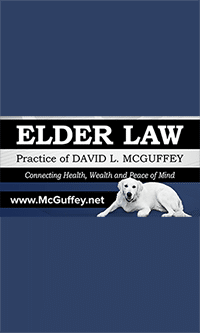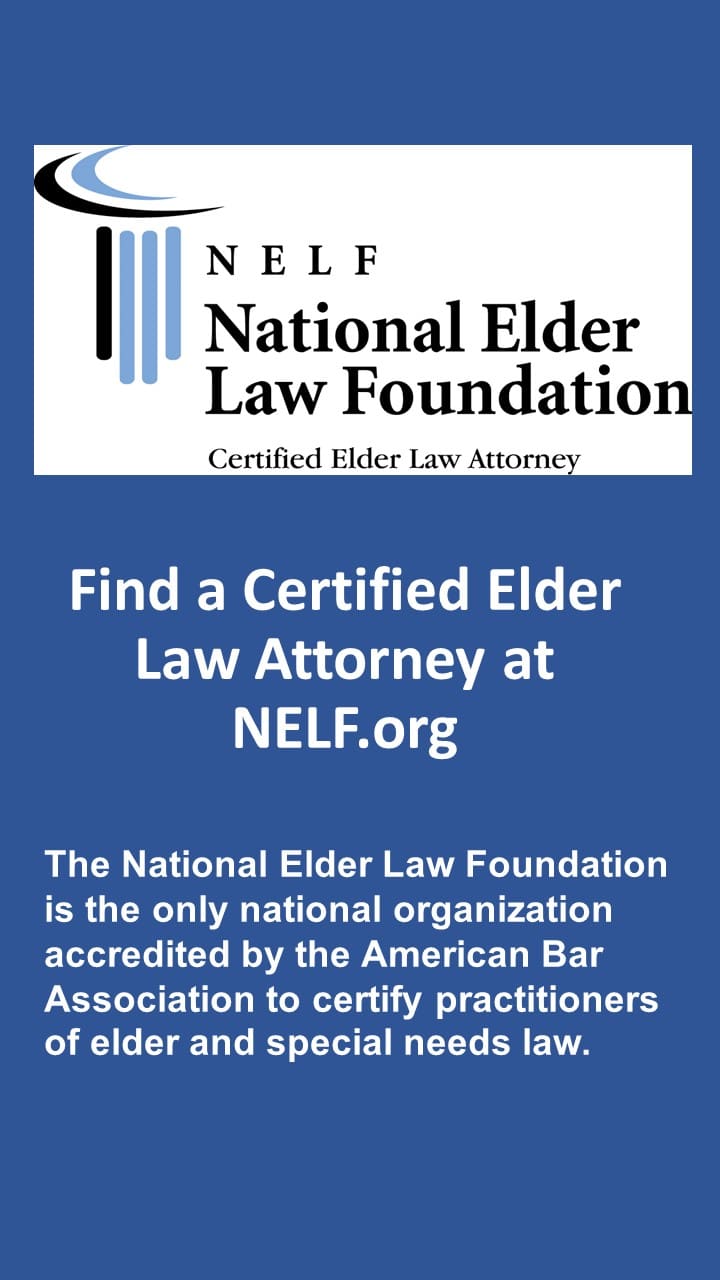“In general, in order to maintain an action, a party “must establish standing to sue on the ground asserted, which requires showing an injury in fact that was caused by the breach of a duty owed by the defendants to the plaintiffs and that will be redressed by a favorable decision from the court.” Ames v. JP Morgan Chase Bank, 298 Ga. 732, 738 (3) (b) (783 SE2d 614) (2016). See also Granite State Outdoor Advertising v. City of Roswell, 283 Ga. 417, 418-419 (1) (658 SE2d 587) (2008). But it does not follow that standing to sue is necessarily a substantive right.” New Cingular Wireless PCS, LLC v. Dep’t of Revenue, 308 Ga. 729 (2020). The standing rule is embodied in Rule 17(a) of the Rules of Civil Procedure, which requires that “Every action shall be prosecuted in the name of the real party in interest.”
Representational Standing:
Initially, certain representatives may prosecute an action in another’s name. O.C.G.A. § 9-11-17 (a) also provides: “A personal representative, a temporary administrator, a guardian, a conservator, a bailee, a trustee of an express trust, a party with whom or in whose name a contract has been made for the benefit of another, or a party authorized by statute may bring an action in his or her own name without joining with him or her the party for whose benefit the action is brought; and, when a statute so provides, an action for the use or benefit of another shall be brought in the name of the state. No action shall be dismissed on the ground that it is not prosecuted in the name of the real party in interest until a reasonable time has been allowed after objection for ratification of commencement of the action by, or joinder or substitution of, the real party in interest; and such ratification, joinder, or substitution shall have the same effect as if the action had been commenced in the name of the real party in interest.” Subsection (b) allows the same representatives to defend actions.
Subsection (c) provides for actions for infants or incompetent persons. It states: “Whenever an infant or incompetent person has a representative, such as a general guardian, committee, conservator, or other like fiduciary, the representative may bring or defend an action on behalf of the infant or incompetent person. If an infant or incompetent person does not have a duly appointed representative, he or she may bring an action by his or her next friend or by a guardian ad litem. The court shall appoint a guardian ad litem for an infant or incompetent person not otherwise represented in an action or shall make such other order as it deems proper for the protection of the infant or incompetent person.”
In New Cingular Wireless PCS, LLC v. Dep’t of Revenue, 308 Ga. 729 (2020), the Court addressed representational standing in the context of how the Department of Revenue must return wrongfully imposed sales taxes. AT&T was seeking to recover those taxes and return them to their customers. Agreeing with AT&T’s position, and finding it had representational standing, the Georgia Court cited the U.S. Supreme Court as follows:
the entire doctrine of “representational standing,” of which the notion of “associational standing” is only one strand, rests on the premise that in certain circumstances, particular relationships (recognized either by common-law tradition or by statute) are sufficient to rebut the background presumption (in the statutory context, about [the legislature’s] intent) that litigants may not assert the rights of absent third parties.
In Powers v. Ohio, 499 US 400 (1991), regarding legal standing to bring a case, the U.S. Supreme Court said “In the ordinary course, a litigant must assert his or her own legal rights and interests, and cannot rest a claim to relief on the legal rights or interests of third parties. Department of Labor v. Triplett, 494 U. S. 715, 720 (1990); Singleton v. Wulff, 428 U. S. 106 (1976).” In Powers, a defendant was accused of murder. The prosecution, without explanation, used six of his nine challenges to strike black individuals from the jury. After each strike, Powers objected and demanded an explanation; none was given. After Powers was convicted, he appealed. After finding Powers had standing to object, the Court held: “statutory prohibition on discrimination in the selection of jurors, 18 U. S. C. § 243, enacted pursuant to the Fourteenth Amendment’s Enabling Clause, makes race neutrality in jury selection a visible, and inevitable, measure of the judicial system’s own commitment to the commands of the Constitution. The courts are under an affirmative duty to enforce the strong statutory and constitutional policies embodied in that prohibition.” In Powers, Justice Scalia dissented, writing “in any event, the Court’s third-party standing analysis is not correct. The Court fails to establish what we have described as the very first element of third-party standing: the requirement of “injury in fact.””
In the context of Medicaid (really an abortion case), The Georgia Supreme Court examined standing in Feminist Women’s Health Center v. Burgess, 282 Ga. 433 (2007). There, medical providers challenged a portion of Georgia’s Medicaid program which denied Medicaid coverage for medically necessary abortions. The trial court dismissed the complaint, but the Georgia Supreme Court reversed.
Initially, the Court stated the general rule regarding standing, which is ‘As a general rule, a litigant has standing to challenge the constitutionality of a law only if the law has an adverse impact on that litigant’s own rights. Ambles v. State, 259 Ga. 406, 383 S.E.2d 555 (1989); Lambeth v. State, 257 Ga. 15, 354 S.E.2d 144 (1987).” The Court stated that when it examines third-party standing issues and finds no authority within it’s own cases, it frequently looks to U.S. Supreme Court cases for guidance. It found, among other cases, Singleton v. Wulff, 428 U.S. 106, 109, 96 S.Ct. 2868, 49 L.Ed.2d 826 (1976). In Singleton v. Wulff, 428 U.S. 106, 109, 96 S.Ct. 2868, 49 L.Ed.2d 826 (1976), the Supreme Court held that physicians had standing to challenge a Missouri statute which, like the challenged Georgia regulations, excluded abortions that were not “medically indicated” from the purposes for which Medicaid benefits were available. The Court found that because a patient’s constitutionally protected abortion decision is one in which the physician is intimately involved, “the physician is uniquely qualified to litigate the constitutionality of the State’s interference with, or discrimination against, that decision.” Id. at 117, 96 S.Ct. 2868. Subsequent to its decision in Singleton, the Supreme Court on numerous occasions has allowed medical providers to raise the rights of their patients. See, e.g., Gonzales v. Carhart, ___ U.S. ___, 127 S.Ct. 1610, 167 L.Ed.2d 480 (2007); Ayotte v. Planned Parenthood, 546 U.S. 320, 126 S.Ct. 961, 163 L.Ed.2d 812 (2006); Dalton v. Little Rock Family Planning Svcs., 516 U.S. 474, 116 S.Ct. 1063, 134 L.Ed.2d 115 (1996); Planned Parenthood v. Casey, 505 U.S. 833, 112 S.Ct. 2791, 120 L.Ed.2d 674 (1992). Virtually every state court considering the issue has similarly held that abortion providers have standing to raise the constitutional rights of their patients, many in cases indistinguishable from the instant case. See, e.g., Humphreys v. Clinic for Women, 796 N.E.2d 247 (Ind.2003); Bell v. Low Income Women of Texas, 95 S.W.3d 253 (Tex.2002); Simat Corp. v. Arizona Health Care Cost Containment System, 203 Ariz. 454, 56 P.3d 28 (2002); Alaska Dept. of Health, etc., v. 39*39 Planned Parenthood of Alaska, 28 P.3d 904 (Alaska 2001); New Mexico Right to Choose/NARAL v. Johnson, 126 N.M. 788, 975 P.2d 841, 846-847 (N.M.1998); ProChoice Mississippi v. Fordice, 716 So.2d 645, 662-665 (1998); Women’s Health Center v. Panepinto, 191 W.Va. 436, 446 S.E.2d 658 (1993).
One could legitimately question whether the Supreme Court’s decision in Dobbs v. Jackson Women’s Health Organization (6/24/2022) altered this analysis, at least with respect to abortion cases. Recent challenges to the drug mifepristone suggest otherwise. In Alliance for Hippocratic Medicine v. F.D.A (N.D. Texas 4/7/2023), the court allowed a group of doctors and national medical associations to challenge the F.D.A.’s approval of the drug, at least when used with abortions. The Court found the association plaintiffs had standing because their members would otherwise have standing to sue in their own right. It found that the physician-patient dynamic favors third-party standing. The Plaintiff medical associations had standing by showing an alleged drain on resources and by identifying specific projects it had to put on hold in order to respond to the challenge. Other plaintiffs were found to have standing because they were in the “zone of interests.” Specifically, the Court held the physician plaintiffs had “third-party standing on behalf of their patients. Plaintiffs’ patients are within the zone of interest of the FFDCA because patients seek safe and effective medical procedures.”
Contracts Cases:
In Grace Brothers, LTD v. Farley Industries, Inc., 264 Ga. 817 (1994), The Court had this to say about standing in contract cases: “Plaintiffs erroneously assert that they are entitled to bring direct claims for breach of the merger agreement because they are third-party beneficiaries of the agreement. Section 9.08 of the agreement expressly states that “nothing in this Agreement, express or implied, is intended to confer upon any other person any rights or remedies of any nature whatsoever under or by reason of this Agreement. . . .” Thus, a plain reading of the merger agreement demonstrates that the parties did not intend to confer third-party beneficiary status on anyone. See Miree v. United States, 242 Ga. 126, 135 (249 S.E.2d 573) (1978) (third party does not have standing to enforce contract unless it clearly appears from the contract that it was intended for his benefit).
Foreclosures:
In Ames v. JP Morgan Chase Bank, N.A., 298 Ga. 732, fn 7 (2016), the Court said: “The legislature has indicated its desire to ensure that only the record holders of deeds initiate foreclosure proceedings. OCGA § 44-14-162 (b) requires that “[t]he security instrument or assignment thereof vesting the secured creditor with title to the security instrument shall be filed prior to the time of sale in the office of the clerk of the superior court of the county in which the real property is located,” and the stated legislative purpose of this provision is to “require a foreclosure to be conducted by the current owner or holder of the mortgage, as reflected by public records,” Ga. L. 2008, p. 624, § 1.”
Insurance:
In Payne v. Twiggs County School District, 269 Ga. 361 (1998), an injured party attempted to make a claim against an insurance policy as a third-party beneficiary. The Court rejected that argument, saying: “Liability insurance claimants generally are not regarded as third-party beneficiaries of insurance policies.” In most insurance cases, the claim is made against the insured. The insured is the contract beneficiary, not the injured party.
Class Actions (Federal):
In Rosen v. Tenn. Comm’r of Fin. & Admin., 288 F.3d 918 (6th Cir. 2002), a federal Medicaid class action, the Court stated: “It is well settled that, at the outset of litigation, class representatives without personal standing cannot predicate standing on injuries suffered by members of the class but which they themselves have not or will not suffer.” Holding that the class representative lacked standing, the Sixth Circuit relied on Warth v. Seldin, 422 U.S. 490 (1975). There, the Supreme Court said:
In its constitutional dimension, standing imports justiciability: whether the plaintiff has made out a “case or controversy” between himself and the defendant within the meaning of Art. III. This is the threshold question in every federal case, determining the power of the court to entertain the suit. As an aspect of justiciability, the standing question is whether the plaintiff has “alleged such a personal stake in the outcome of the controversy” as to warrant his invocation of federal-court jurisdiction and to justify exercise of the court’s remedial powers on his behalf. Baker v. Carr, 369 U. S. 186, 204 (1962). The Art. III judicial power exists only to redress or otherwise to protect against injury to the complaining party, even though the court’s judgment may benefit others collaterally. A federal court’s jurisdiction therefore can be invoked only when the plaintiff himself has suffered “some threatened or actual injury resulting from the putatively illegal action . . . .” Linda R. S. v. Richard D., 410 U. S. 614, 617 (1973). See Data Processing Service v. Camp, 397 U. S. 150, 151-154 (1970).[10]
Apart from this minimum constitutional mandate, this Court has recognized other limits on the class of persons who may invoke the courts’ decisional and remedial powers. First, the Court has held that when the asserted harm is a “generalized grievance” shared in substantially equal measure by all or a large class of citizens, that harm alone normally does not warrant exercise of jurisdiction. E. g., Schlesinger v. Reservists to Stop the War, supra; United States v. Richardson supra; Exparte Levitt, 302 U. S. 633, 634 (1937). Second, even when the plaintiff has alleged injury sufficient to meet the “case or controversy” requirement, this Court has held that the plaintiff generally must assert his own legal rights and interests, and cannot rest his claim to relief on the legal rights or interests of third parties. E. g., Tileston v. Ullman, 318 U. S. 44 (1943). See United States v. Raines, 362 U. S. 17 (1960); Barrows v. Jackson, supra. Without such limitations—closely related to Art. III concerns but essentially matters of judicial self-governance—the courts would be called upon to decide abstract questions of wide public significance even though other governmental institutions may be more competent to address the questions and even though judicial intervention may be unnecessary to protect individual rights. See, e. g., Schlesinger v. Reservists to Stop the War, 418 U. S., at 222.








